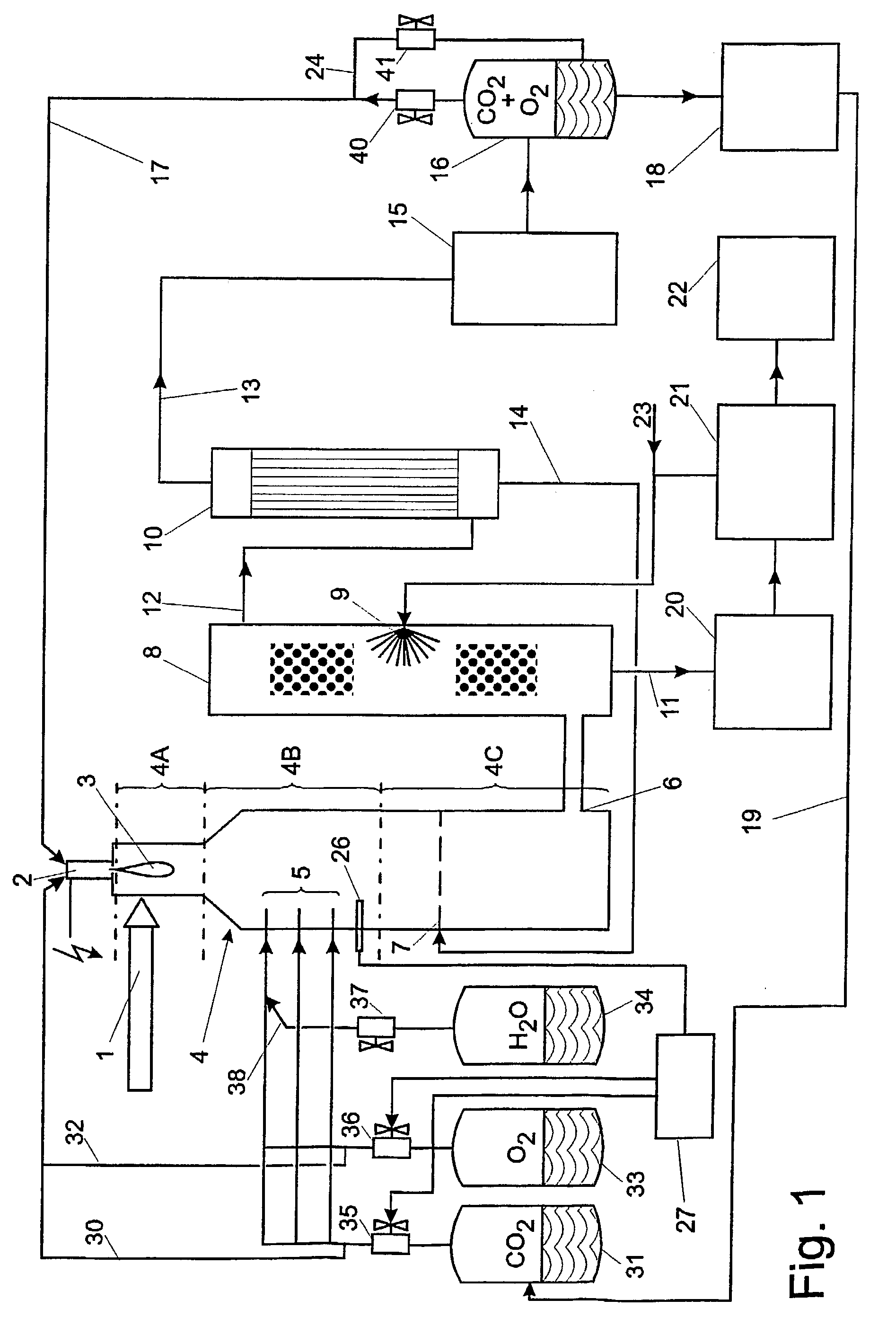Method for treatment of hazardous fluid organic waste materials
- Summary
- Abstract
- Description
- Claims
- Application Information
AI Technical Summary
Benefits of technology
Problems solved by technology
Method used
Image
Examples
example 2
[0058] Treatment of trichloro-biphenyl (C.sub.12H.sub.7Cl.sub.3)
[0059] C.sub.12H.sub.7Cl.sub.3+13O.sub.2=12CO.sub.2+3HCl+2H.sub.2O
[0060] 257.5 kg 416 kg 528 kg 109.5 kg 36 kg
[0061] 3HCl+1.5Na.sub.2CO.sub.3=3NaCl+1.5CO.sub.2+1.5H.sub.2O
[0062] 109.5 kg 159 kg 175.5 kg 66 kg 27 kg
[0063] Thus when treating 1 kg of trichloro-biphenyl 2.30 kg of carbon dioxide and 0.68 kg of sodium chloride are obtained. 1.62 kg of oxygen and 0.62 kg of sodium carbonate are used.
[0064] The method according to the invention has the following advantages.
[0065] By means of the method according to the invention from the hydrocarbon waste materials pure, utilizable carbon dioxide can be produced and this reduces considerably the deterioration costs.
[0066] When treating waste materials without nitrogen content the nitrogen oxide emission can be completely avoided, processing wastes with low nitrogen content, it can be held on a low level, (when compared to the incineration with air), as the nitrogen is present ...
PUM
| Property | Measurement | Unit |
|---|---|---|
| Temperature | aaaaa | aaaaa |
| Temperature | aaaaa | aaaaa |
| Temperature | aaaaa | aaaaa |
Abstract
Description
Claims
Application Information
 Login to View More
Login to View More - R&D
- Intellectual Property
- Life Sciences
- Materials
- Tech Scout
- Unparalleled Data Quality
- Higher Quality Content
- 60% Fewer Hallucinations
Browse by: Latest US Patents, China's latest patents, Technical Efficacy Thesaurus, Application Domain, Technology Topic, Popular Technical Reports.
© 2025 PatSnap. All rights reserved.Legal|Privacy policy|Modern Slavery Act Transparency Statement|Sitemap|About US| Contact US: help@patsnap.com

